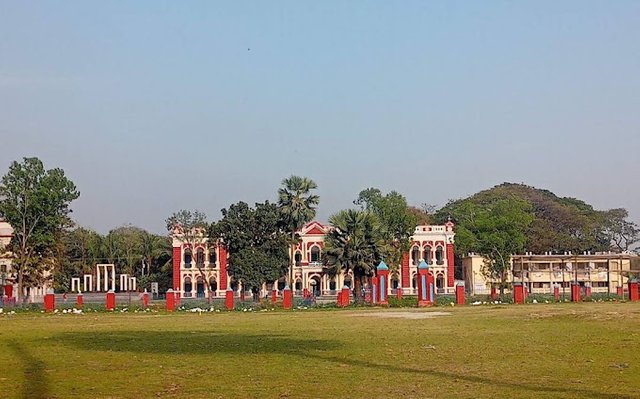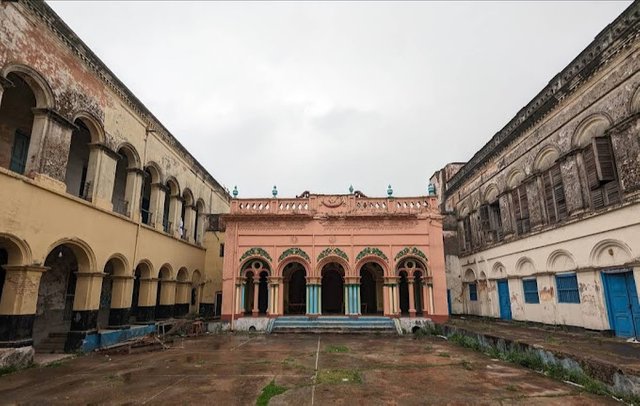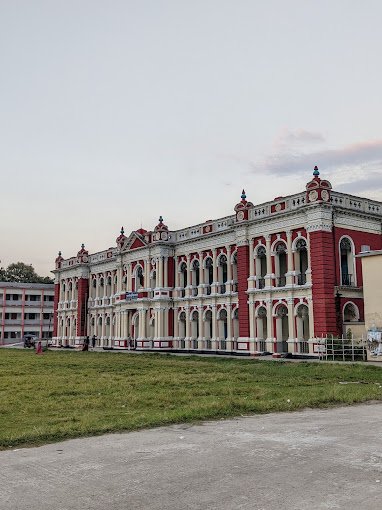A Zamindar residence is the destination of today's excursion. In Narayanganj, Rupganj, there is not a single Murapara zamindar home. Today, it will begin in the late afternoon, continue there throughout the day, and conclude there in the late evening. I will learn a lot of little details about Murapara's past, origin, and present state in addition to touring there. Let's start now.

One of the zamindar houses that are still standing in the area of Dhaka is called Murapara Zamindar House. Like many others, this stately house is slowly deteriorating as a reminder of the past. But this one is in better shape compared to other Zamindar homes in our nation. You can notice degradation if you go to the back of the main structure. On 40 hectares of land, zamindar Pratap Chandra Banerjee began construction on this Zamindar residence in 1889. His son Vijay Chandra finished the first phase of the building in 1899. There are over a hundred rooms in this enormous zamindar mansion, and practically every one includes a handmade element. This zamindar home is separated into several different rooms, including a dance hall, a puja mandap, a conference room, and a shed.

Given the past, it is well known that Zamindar Babu, the sixth senior male Zamindar and the founder of the Murapara Zamindar dynasty, was Ram Ratan Banerjee. He was a dependable vassal of the Natorean king. He was given several properties in the Murapara area as compensation for his honesty. Babu Ram Ratan Banerjee established the Murapara Zamindar house. The Shahjadpur zamindari was bought and enlarged by Ram Ratan Banerjee's grandson, Pratap Chandra Banerjee and son Pitambar Banerjee. According to legend, Pratap Banerjee and Prince Dwarkanath Tagore developed a close bond by purchasing Zamindari, the great-grandfather of poet Rabindranath Tagore. Father of Pratap Chandra Banerjee, Ejmali, moved out of the old home in 1889 and began construction on the Alochya palace's back portion. Vijay Chandra Banerjee, the son of Pratap Chandra Banerjee, built a one-story structure in front of the court and dug two ponds there before passing away from a heart attack in 1899. He was the area's first graduate. Two illustrious sons of Vijay Chandra Banerjee, Jagadish Chandra Banerjee and Ashutosh Chandra Banerjee, completed the second floor of the palace in 1909. Jagdish Chandra Banerjee is well-known in this area. The family of Jagadish Chandra Banerjee, who was the Zamindar at the time, relocated to Calcutta in 1947. As a result, Jagadish Chandra Banerjee's majestic palace was demolished.

Then, in 1948, the government acquired ownership of this classic home. Here, high school and college were founded in 1966. Currently, Murapara Degree College is housed in this Zamindar. Hundreds of Zamindar homes are in various areas of Bangladesh's district and upazila. However, because of negligence, those zamindar homes are deteriorating—the eyewitnesses of our historic culture. Maybe after many generations, these Zamindar homes will entirely fall apart. They won't have anything to use as witnesses. However, care should be taken to preserve these zamindar homes.
Way of Visit>>>
Catch any bus going to Meghla, Glory, Asean Paribahan, or Narsingdi Bhairab at Rupsi Bus Stand or Bhulta in the capital city of Dhaka from Syedabad, Gulistan, or Jatrabari. Afterwards, take a rickshaw to Zamindar's home. Murapara Zamindar House by CNG (20 taka per person rental fee) from Rupsi Bus Station. There are other hotels around that offer a variety of dining alternatives.
Wishing Everyone Luck.